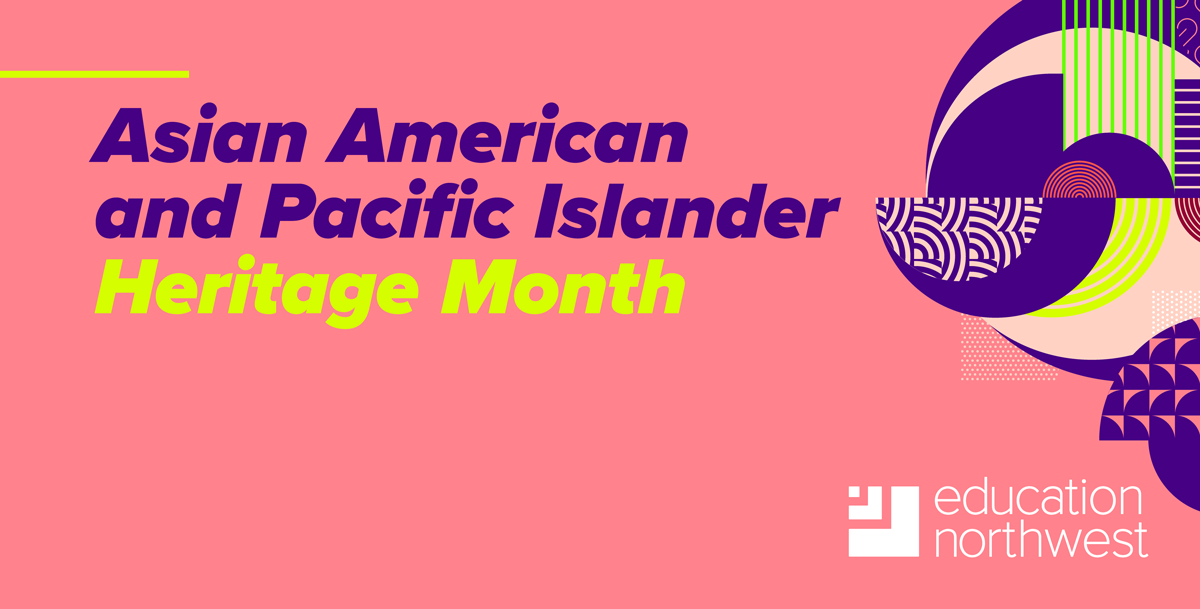Honoring Asian American and Pacific Islander Heritage Month

May is Asian American and Pacific Islander Heritage Month. Though the terms Asian American and Pacific Islander are often grouped together, each on its own represents a vast range of nations, ethnic groups, cultures, histories, and experiences.
This rich diversity is reflected in Asian American and Pacific Islander students. Consider the vastly different experiences held by fifth-generation Filipino Alaskans; newly arrived immigrants from India; U.S.-born children of Vietnam War refugees; and young people from the U.S. territories of Guam or American Samoa.
Honoring the unique identity of each student means learning, teaching, and celebrating the diversity of communities with roots in Asia and the Pacific Islands. It also means taking a stand to support Asian Americans and Pacific Islanders within our schools and our communities. With reports of anti-Asian hate crimes rising rapidly since 2019, it is ever more urgent to stand with our Asian American students, colleagues, and neighbors. As we work to ensure all students receive an excellent and equitable education, we must create safe, inclusive communities while denouncing and rooting out bias and hate. All adults in education, regardless of their role, play an important role in this work.
Below, we provide resources to help schools and educators expand their knowledge about various Asian American and Pacific Islander communities, teach students about the diversity within these groups, and take steps to eliminate hate and bias in our schools.
Learn, Teach, and Celebrate the Diversity of the Culture
One month is not long enough to teach about the diversity within Asian American and Pacific Islander communities, but it can serve as a starting point. Use this month as an opportunity to explore new resources and weave them into your classroom all year.
- The PBS Asian Americans collection builds off a five-hour documentary series with short videos, lesson plans, and an interactive media center.
- This reading list for elementary and middle school students can help you highlight Asian American voices in literature.
- The Zinn Education Project has collected a series of Pacific Islander-specific teaching resources.
- This National Endowment for the Humanities lesson plan highlights arts and culture created by Asian Americans and Pacific Islanders.
- This YouTube playlist of Pacific Islander poetry features more than 250 readings from modern artists.
Understand and Challenge Stereotypes
Stereotypes about Asian Americans and Pacific Islanders can cause harm by erasing individual perspectives and experiences. One prominent and problematic Asian American stereotype is the model minority myth. A teacher who buys into this stereotype might assume that all Asian American students will excel in math. As a result, he might offer less support to those students compared to others in the same class.
Becoming aware of and learning to check our own biases can help us reduce our reliance on stereotypes. Designed for educators by educators, the Smithsonian Asian Pacific American Center’s We Are Not a Stereotype video series explores and debunks many stereotypes about Asian American and Pacific Islander communities. The series also features strategies and resources to support student learning on the same topics.
Learn to Intervene Against Anti-Asian Harassment
Stop AAPI Hate has compiled several resources for interrupting harassment, including free virtual bystander intervention trainings. While these resources focus on Asian communities, the strategies can and should extend to speaking out when any instances of harassment or discrimination occur.
For leaders in education spaces, consider ways to incentivize your staff and community to participate in this important work. You might offer professional development credit to teachers or build community through the trainings by inviting parents and the broader school community to join.
Our Asian American and Pacific Islander students need to feel heard, seen, and safe in our schools. We can all help create more equitable environments for these students by celebrating their unique identities and by encountering bias in ourselves and in others.
